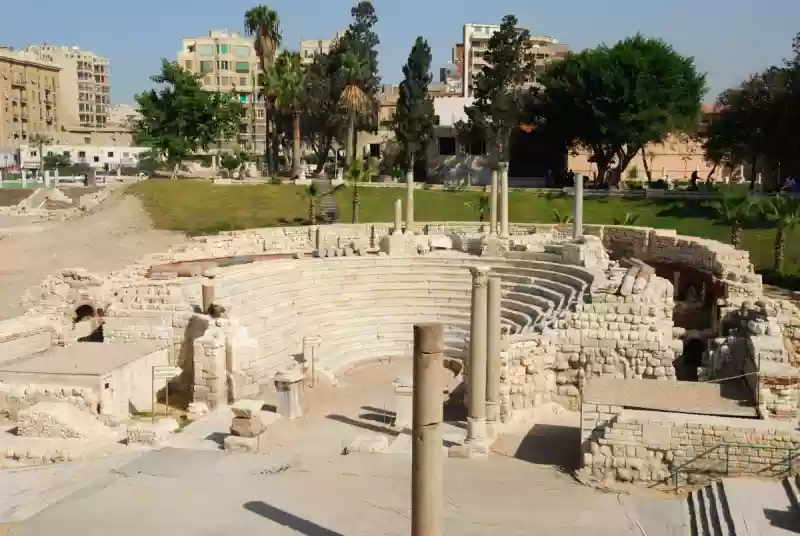The Memorial of Diocletian in Alexandria (Pompey's Pillar)

The "Pompey Pillar," also known as Egypt's most revered memorial column, stands tall as a symbol of historical significance. Fashioned from solid red granite, this colossal structure reaches a staggering height of approximately 28 meters, while its base boasts an impressive diameter of 2.7 meters. Adorning the upper portion of the western side lies an inscription inscribed in the elegant language of Greek. This inscription pays homage to the esteemed Emperor Diocletian, known for his unwavering commitment to justice and his role as the guardian of Alexandria. It also acknowledges the monumental efforts of Postumus, the esteemed Prefect of Egypt, who oversaw the erection of this magnificent monument. Through its grandeur and historical relevance, the Pompey Pillar serves as a testament to Egypt's rich heritage and enduring legacy.
The Pompey Pillar
The Pompey Pillar is an awe-inspiring symbol of Egypt's rich heritage and enduring legacy. Its grandeur and historical relevance capture the attention of all who encounter it. This monument holds a deep significance, as it commemorates a pivotal moment in history when Egypt, after a period of resistance, finally surrendered and returned to Roman rule.
Alexandria faced immense hardships during this time, including a severe famine. In response, the compassionate emperor ordered that a portion of the corn, which was annually sent to Rome, be redirected to the people of Alexandria. Furthermore, he exempted them from paying taxes during these challenging times. The Pompey Pillar stands tall in gratitude for the emperor's benevolence and support during these trying circumstances.
Interestingly, during the Middle Ages, the Crusaders held a misconception. They mistakenly believed that the ashes or remains of the renowned Roman general Pompey were contained within a pot at the column's pinnacle. This erroneous belief led to the nickname "Pompey's Pillar" for this magnificent structure.
The Pompey Pillar's significance
The Pompey Pillar's significance extends beyond its historical context. It stands as a testament to the resilience and strength of the Egyptian people throughout their tumultuous history. Visitors from all corners of the globe are captivated by its imposing presence and the stories it tells. This iconic monument stands as a powerful reminder of the enduring legacy of Egypt's past and its profound impact on the present.
Various monuments are also located around the column. At the back are the remains of the Serapium or a temple of the God Serapis, now severely damaged. It was built during the reigns of Ptolemy II and Ptolemy III but was destroyed due to revolts of the Jewish population in Alexandria during the reign of Emperor Trajan (89-118 A.D). It was rebuilt again during the reign of Hadrian (117-137 A.D). It likely was destroyed, once more, after the appearance of Christianity. It consisted of a high platform accessed through a staircase of 100 steps.
At the side of the platform, a basin was also used for purification. Two galleries at the back of the temple were cut entirely from the rock. In the first gallery, a black statue of basalt that dates back to the reign of Hadrian was discovered. It represents the God Serapis in the shape of a bull and is now exhibited in the Greco-Roman Museum in Alexandria. The 2nd gallery is mistakenly known as the Daughter Library, but it seems it was an Anubidiun or burial for the mummies of the god Anubis.

















